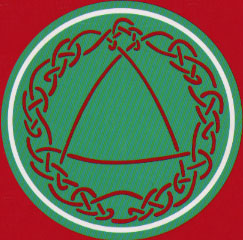
 Welcome to Jon's Other page on Buzzy
Welcome to Jon's Other page on Buzzy
This is what I look like
 Since I don't have pictures of myself and I don't own any that I think is a good overall description of myself, I'll have to use words. I think that the picture you paint of me from my descriptions will give you a better idea of who I am than if you actually saw a picture of me. Here's a discription of me from my friend Mike Cynn: "Long Haired Chinese Electrical Engineer". So it is clear that I have long hair, it is black and at a good healthy length of 3 feet or so. I am thin, tall, and have the typical chinses cheekbones and almond shaped dark eyes. I also wear glasses. Contrary to what most believe, my use of Very Small Fonts in my terminals and Window Managers do not make my eyes worse, I haven't had a new prescription in years. Over 99% of all my clothes are black or very dark shade of whatever color they are. 100% of all my pants are black dress pants and I own only 1 pair of shoes, they are black dress shoes. My reason for wearing such dark clothing:
Since I don't have pictures of myself and I don't own any that I think is a good overall description of myself, I'll have to use words. I think that the picture you paint of me from my descriptions will give you a better idea of who I am than if you actually saw a picture of me. Here's a discription of me from my friend Mike Cynn: "Long Haired Chinese Electrical Engineer". So it is clear that I have long hair, it is black and at a good healthy length of 3 feet or so. I am thin, tall, and have the typical chinses cheekbones and almond shaped dark eyes. I also wear glasses. Contrary to what most believe, my use of Very Small Fonts in my terminals and Window Managers do not make my eyes worse, I haven't had a new prescription in years. Over 99% of all my clothes are black or very dark shade of whatever color they are. 100% of all my pants are black dress pants and I own only 1 pair of shoes, they are black dress shoes. My reason for wearing such dark clothing:
- It is very easy for me to shop for new clothing. Everything always matches.
- Since I do not sweat very much (not much I do causes sweating, except for my hands when), stains and dirt do not appear over dark clothing, thus I can wear them for weeks at a time without them smelling or looking dirty.
- Because of my previous reason, people won't necessarily think that I am a slob and never changes my clothing because I own so many dark clothes.
- Because fashion isn't even in my vocabulary
Sometimes you will see me dressed very nicely (dress shirt, tie, sports jacket, probably for no occasion except that I had the time to dedicate myself to dressing nice). Other times, you will see me in shambles, without a shower for weeks and without a change of clothing for weeks. Although now that I am not attending Carnegie Mellon any more, I am not in that poorly kept a shape as often. I own a 15th Century wool coat, which a friend of mine in the costume design department at CMU made for me. It is very warm and during even the slightest of cold days, you will see me wear it.





Me and Computers
Well, I got my first computer at the tender age of 8. It was an Atari 400 with a Cassette Tape player that connect to the back. I had less than 1k of RAM to work with and I had to load programs in from the tape player. Even with such an archaic system, I was instantly fascinated with why everything was working. Why was it that when I plug in a cartridge I can play a game? I was constantly using the computer everyday and ignoring my studies (I was only in 2nd grade, so there wasn't much to be studying). I checked out books in the library concerning the subjects of electricity and electronics (there were no books about computers in the libraries of Ocala in 1982). I greedily learned every concept of Basic programming (GW-Basic, plug the cartridge in and turn on). I wrote Basic programs that displayed pictures (all ascii, well not even ascii) and I can crudely edit them by coord. I wrote text adventure games, card games, dice games, role playing games, etc... everything that I could possibly do with 512bytes of RAM (note that a simple "PacMan" game is nearly impossible with 512bytes of RAM).
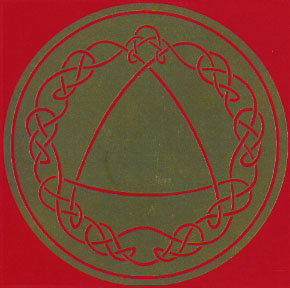 Alas, the hundreds of hundreds of hours of little fingers banging away at a touchpad style keyboard was its undoing. The keypad style keyboard was destroyed and fixing it costs more than a new computer. Now the keyboard was non-functional, but I could still play games that didn't use the keyboard. It wasn't until I was in middle school (about 2 years) that we got another computer. My parents moved to the suburbs and a neighbor had a KayPro computer. It had an 8088 chip and 640K of RAM. (The only other competitors at the time was Tandy 1000 with 512K of RAM). I was over at my neighbor's house using his computer all the time. I studied all the manuals it came with, I learned every DOS command. I wrote Batch Files. I learned how to write Assembly Code using DEBUG, I learned how to manipulate registers, and I learned how to severely crash the computer with a single instruction (MOV $0,PC). I learned how to use a stack as a data structure. It wasn't too long before my dad purchased a KayPro XT, 4Mhz. Over the next few years, up to my Junior year in highschool, I made several modifications to the motherboard (I took 3 years of Electronics in highschool, and they let us bring things in) including an upgrade to a wopping 12Mhz, wrote IFS fractals programs (with my good friend Daniel Wang), play hundreds of games, and finally become a SysOp of a BBS running from the XT. Over that period of time, My parents moved the computer out of my room and into the living room so I would sleep at night. My family also got a 286 (80286-12) and eventually a 386 (80386-33). Here was computing power beyond my dreams. I knew Pascal and C fluently and exploited the 386 to hours of fractal computing, hundreds of BBS modifications (I ran a WWIV BBS, the source was in TurboC by Borland), experimenting with super fast file transfer protocols over the modem using C, ANSI manipulation programs in C.
By the end of my Junior year in highschool, I had been accepted into a Science and Engineering program held over the summer at University of Florida. I was leaving Ocala whipNodech meant that I was no longer going to be able to maintain my BBS. After 4 years of running a WWIV BBS named "The Abyss" in Ocala, I had developed close friendships to many of the more freakish people in Ocala with modems. I had users meetings every Friday night at a local Village Inn. And by now, my KayPro had so many modifications that sometimes it would turn off, and I would be left helpless until it felt like turning itself back on, or sometimes it would reboot for no reason. If I spent the summer in Gainseville, I would not be able to maintain the BBS. After many sleepless nights, I decided to call it quits. "The Abyss" was no longer, but it had 4 prosperous years connected to the Bell South phone lines.
Alas, the hundreds of hundreds of hours of little fingers banging away at a touchpad style keyboard was its undoing. The keypad style keyboard was destroyed and fixing it costs more than a new computer. Now the keyboard was non-functional, but I could still play games that didn't use the keyboard. It wasn't until I was in middle school (about 2 years) that we got another computer. My parents moved to the suburbs and a neighbor had a KayPro computer. It had an 8088 chip and 640K of RAM. (The only other competitors at the time was Tandy 1000 with 512K of RAM). I was over at my neighbor's house using his computer all the time. I studied all the manuals it came with, I learned every DOS command. I wrote Batch Files. I learned how to write Assembly Code using DEBUG, I learned how to manipulate registers, and I learned how to severely crash the computer with a single instruction (MOV $0,PC). I learned how to use a stack as a data structure. It wasn't too long before my dad purchased a KayPro XT, 4Mhz. Over the next few years, up to my Junior year in highschool, I made several modifications to the motherboard (I took 3 years of Electronics in highschool, and they let us bring things in) including an upgrade to a wopping 12Mhz, wrote IFS fractals programs (with my good friend Daniel Wang), play hundreds of games, and finally become a SysOp of a BBS running from the XT. Over that period of time, My parents moved the computer out of my room and into the living room so I would sleep at night. My family also got a 286 (80286-12) and eventually a 386 (80386-33). Here was computing power beyond my dreams. I knew Pascal and C fluently and exploited the 386 to hours of fractal computing, hundreds of BBS modifications (I ran a WWIV BBS, the source was in TurboC by Borland), experimenting with super fast file transfer protocols over the modem using C, ANSI manipulation programs in C.
By the end of my Junior year in highschool, I had been accepted into a Science and Engineering program held over the summer at University of Florida. I was leaving Ocala whipNodech meant that I was no longer going to be able to maintain my BBS. After 4 years of running a WWIV BBS named "The Abyss" in Ocala, I had developed close friendships to many of the more freakish people in Ocala with modems. I had users meetings every Friday night at a local Village Inn. And by now, my KayPro had so many modifications that sometimes it would turn off, and I would be left helpless until it felt like turning itself back on, or sometimes it would reboot for no reason. If I spent the summer in Gainseville, I would not be able to maintain the BBS. After many sleepless nights, I decided to call it quits. "The Abyss" was no longer, but it had 4 prosperous years connected to the Bell South phone lines.
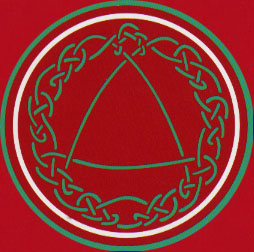 Over the summer at UF, I was exposed to new dimensions of computing power. I worked under a professor of Electrical Engineering. He gave me keys to the lab so I could come by whenever I wanted. In the basement of the CSE building at UF, the EE labs had HP oscilloscopes that were more powerful than my KayPro. A cluster of HP Apollo 750's with 23 in High Definition color monitors. A VGA gif which normally took up the entire screen on my KayPro was merely an inch tall on one of these Apollo monitors. I was exposed to the internet. Even though 1991 is a little late to be discovering the internet, I did the best I could to catch up. I spent countless numbers of nights in the Apollo cluster and learned UNIX and how the internet worked. Telnet, FTP, FPU, rlogin, all these fascinating tools which let me span this thing called the internet. I learned the TurboC shell (tcsh) and configured my own X Window Manager. I learned how the X toolkit works and how ethernet worked (The geeks in this Apollo cluster was comparable to the geeks at CMU). That summer changed my life forever. After initially getting over the backwardsness and unintuitiveness of the UNIX environment, I realized how awesome UNIX is. I realized how the environment allows you to have literally an infinite number things you can do and an infinite number of ways to do it. The power of a UNIX shell script towered over DOS' batch language. Everything is right where it needs to be, everything is done in an orderly fashion, everything seems so nice and organized. Then I learned about sysadm and it gave me a headache having to think about it. But up to this day, I think that UNIX is the most powerful tool that exists for interfacing a user to the processor. Over the time I was in this Summer Program, I was working on a science fair project that I could do my Senior year. I bought an HC11 Evaluation Board by Motorola (it has a 68HC11 processor and a micro controller), and programmed it to work with an array of motors and sensors. Although doing this in HC11 assembly is a long and tedious process (Thank God for Emacs), I made this autonomous robot to follow the strongest light source in a darkened room. Experimenting ways (in the programming, not the hardware) to make it run better was made into my Science Fair project for my senior year in Highschool. This project won me 1st Prize in Region, 3rd in State of FL, and 4th in International (held in Nashville, TN in 1992), amongst other various special awards. During the state science fair, I was approached by a person in a business suit that asked me if I wanted to work for NASA. Not being stupid, I said OK, and in a month I was asked to go to Titusville, FL (Kennedy Space Center) to work in a Design Engineering group at a McDonnell Douglas site. Here, I used Integraph machines to run VERY high-tech CAD software. I learned how to use UNIX databases and how different the NASA netword was setup in comparison to UF's network. I also had my first introduction to an SGI workstation here. Some of the most amazing computer graphics I've ever seen. In my opinion, the people who I worked with were not very intellegent. They were all good people, but I couldn't talk to them beyond what we worked on, there just wasn't anything there. I also disliked the 8:30-4:30 schedule of working. By the end of the summer, I decided to leave the sweatshop and attend school at CMU. CMU has unbelievable computing fascilaties. The AFS (Andrew File System) is a huge virtual device which is networked to major computer intensive universities (MIT, Cornell, UCBerkely, Stanford, etc...) and corporations. This makes it the single largest "Hard Drive" with more data than anything imaginable. Almost every year, thousands of dollars of computer equitment is donated to CMU by major manufacturers (Sun, HP, SGI, Motorola, etc...). Everything is state-of-the-art. Being a freshman at CMU who already knew UNIX, X, and the internet (which is not rare), I placed out of the Computer Skills classes we were made to take and imediately began to take in the mass amounts of information. I Then went on a 4 year expidition into computers in academia. I learned about the basic principles computers are based on, I learned how processors are designed, I learned how processors are made (I designed and laid out 2 of them), I learned how to program the tools used in designing and implementing VLSI IC's. I designed and built from simple logic devices a 32bit RISC processor with RAM and 8 top level instructions. I learned how programming is made a science. I learned the basic data structures (lists, trees, graphs, heaps), I learned the basic sorting algorithms (quicksort, mergesort, radix sort, bubble sort), I learned the basic searching methods for each data structure. I learned LISP and how object oriented programming can be nothing like C++. And up to now, my never ending journey through the world of computers continues from CMU.
Over the summer at UF, I was exposed to new dimensions of computing power. I worked under a professor of Electrical Engineering. He gave me keys to the lab so I could come by whenever I wanted. In the basement of the CSE building at UF, the EE labs had HP oscilloscopes that were more powerful than my KayPro. A cluster of HP Apollo 750's with 23 in High Definition color monitors. A VGA gif which normally took up the entire screen on my KayPro was merely an inch tall on one of these Apollo monitors. I was exposed to the internet. Even though 1991 is a little late to be discovering the internet, I did the best I could to catch up. I spent countless numbers of nights in the Apollo cluster and learned UNIX and how the internet worked. Telnet, FTP, FPU, rlogin, all these fascinating tools which let me span this thing called the internet. I learned the TurboC shell (tcsh) and configured my own X Window Manager. I learned how the X toolkit works and how ethernet worked (The geeks in this Apollo cluster was comparable to the geeks at CMU). That summer changed my life forever. After initially getting over the backwardsness and unintuitiveness of the UNIX environment, I realized how awesome UNIX is. I realized how the environment allows you to have literally an infinite number things you can do and an infinite number of ways to do it. The power of a UNIX shell script towered over DOS' batch language. Everything is right where it needs to be, everything is done in an orderly fashion, everything seems so nice and organized. Then I learned about sysadm and it gave me a headache having to think about it. But up to this day, I think that UNIX is the most powerful tool that exists for interfacing a user to the processor. Over the time I was in this Summer Program, I was working on a science fair project that I could do my Senior year. I bought an HC11 Evaluation Board by Motorola (it has a 68HC11 processor and a micro controller), and programmed it to work with an array of motors and sensors. Although doing this in HC11 assembly is a long and tedious process (Thank God for Emacs), I made this autonomous robot to follow the strongest light source in a darkened room. Experimenting ways (in the programming, not the hardware) to make it run better was made into my Science Fair project for my senior year in Highschool. This project won me 1st Prize in Region, 3rd in State of FL, and 4th in International (held in Nashville, TN in 1992), amongst other various special awards. During the state science fair, I was approached by a person in a business suit that asked me if I wanted to work for NASA. Not being stupid, I said OK, and in a month I was asked to go to Titusville, FL (Kennedy Space Center) to work in a Design Engineering group at a McDonnell Douglas site. Here, I used Integraph machines to run VERY high-tech CAD software. I learned how to use UNIX databases and how different the NASA netword was setup in comparison to UF's network. I also had my first introduction to an SGI workstation here. Some of the most amazing computer graphics I've ever seen. In my opinion, the people who I worked with were not very intellegent. They were all good people, but I couldn't talk to them beyond what we worked on, there just wasn't anything there. I also disliked the 8:30-4:30 schedule of working. By the end of the summer, I decided to leave the sweatshop and attend school at CMU. CMU has unbelievable computing fascilaties. The AFS (Andrew File System) is a huge virtual device which is networked to major computer intensive universities (MIT, Cornell, UCBerkely, Stanford, etc...) and corporations. This makes it the single largest "Hard Drive" with more data than anything imaginable. Almost every year, thousands of dollars of computer equitment is donated to CMU by major manufacturers (Sun, HP, SGI, Motorola, etc...). Everything is state-of-the-art. Being a freshman at CMU who already knew UNIX, X, and the internet (which is not rare), I placed out of the Computer Skills classes we were made to take and imediately began to take in the mass amounts of information. I Then went on a 4 year expidition into computers in academia. I learned about the basic principles computers are based on, I learned how processors are designed, I learned how processors are made (I designed and laid out 2 of them), I learned how to program the tools used in designing and implementing VLSI IC's. I designed and built from simple logic devices a 32bit RISC processor with RAM and 8 top level instructions. I learned how programming is made a science. I learned the basic data structures (lists, trees, graphs, heaps), I learned the basic sorting algorithms (quicksort, mergesort, radix sort, bubble sort), I learned the basic searching methods for each data structure. I learned LISP and how object oriented programming can be nothing like C++. And up to now, my never ending journey through the world of computers continues from CMU.





Me and Kinetoscope
When I am in Pittsburgh, I work on an UltraSparc 1 in Wean Hall or on my ThinkPad at home, telneted into the unix pool at CMU. I use Emacs editor for just about everything. I can run a shell in my emacs window, telnet to places, I have an endless scroll back, and I have tab completion in DOS. But aside from that IMHO: Emacs is the best editor a programmer could ever want. I write code in java and make it do random things. I prefer to stay away from the seemingless unending headaches of java.awt, and stick to the backend of applications. I've been writing a lot of different things, clients for different protocols (SMTP, HTTP, FTP, NNTP) and write utils. I also work on java agents. I work with Paul and Morgan, both of which I am very good friends with. My Boss Damien Miller is a very cool person to have as a boss. I knew Damien when I was an engineering major at CMU. I used to hang out at his and Michelle's apartment in Shadyside on Negley Avenue. When I am in Florida, at Kinetoscope, I use the SGI workstation. You can see the information about my machine on my bloody page. Working remotely is working out nicely so far. I write lots of email and get lots of email. A habit developed since my early days of computing, I frequently stay up all night on a computer, and possibly all day and all night again. Personally I prefer a 24-10(that's 24 hours awake, 10 hours asleep) or a 30-12 schedule the best. There is so much that make the night an enjoyable time, it is really a shame that people have to sleep at all. If I didn't have to sleep I probably wouldn't. If someone spent 8 hours every 24 hours sleeping from birth to death, and this person lived 81 years, then 27 years of that person's life was spent asleep, motionless, being almost completely unproductive. That's 9855 days, 236520 hours, 14191200 minutes. Imagine if you had over a million extra minutes to spend learning to play the violin or building a house. Occasionally, and some times frequently, I make trips to Florida to work at the office of kinetoscope amongst my compadres. I will be moving to San Francisco soon to set up a base there.





Some of my links
- Airport Codes! All over the world! Whoopee!
- The Internet Sleuth comprehensive web searching utility.
- Want to know what the weather will be like? California Bay Area Weather reports.
- Want directions to where you're going? Lycos has MAPS!
- Can't find it at Lycos? Try the Maps at City.Net
- Still can't find it? How about Yahoo's Maps.
- Want to know what time it is? The EXACT time? These are over 50 of the most accurate clocks known to man averaged together to make the Master Clock. There's also a java applet that ticks realtime also.
-
- For all Quakers, (ha ha) here is a list of Quake Servers which are active, updated every so many minutes.
- Here is a link to a collection of song lyrics of Pink Floyd
- Euler's Number Homepage which has e calculated to over 2,000,000 decimal places.
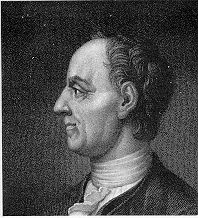
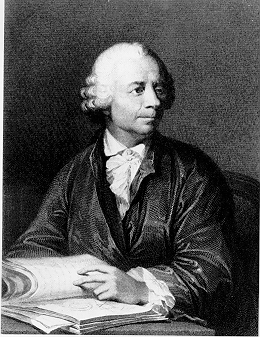 Leonard Euler was the greatest of all mathematicians, whose overwhelming achievements so profoundly changed mathemetics forever.
Leonard Euler was the greatest of all mathematicians, whose overwhelming achievements so profoundly changed mathemetics forever.





Home|Music|Bloody|CMU Home
jonlin@buzzy.kinetoscope2.com

